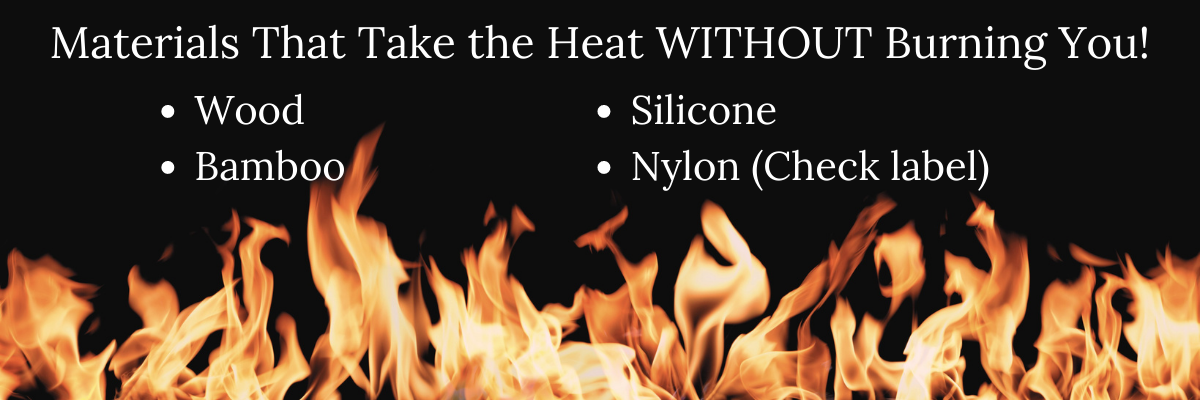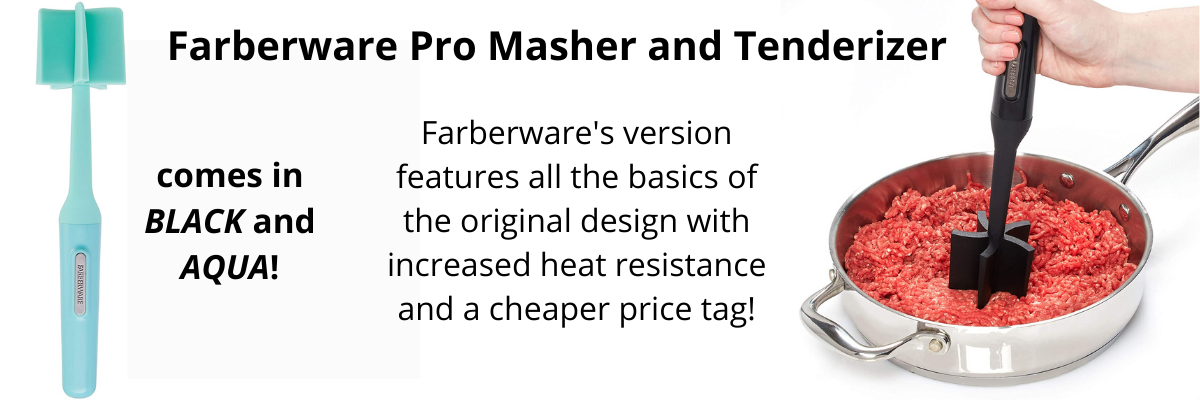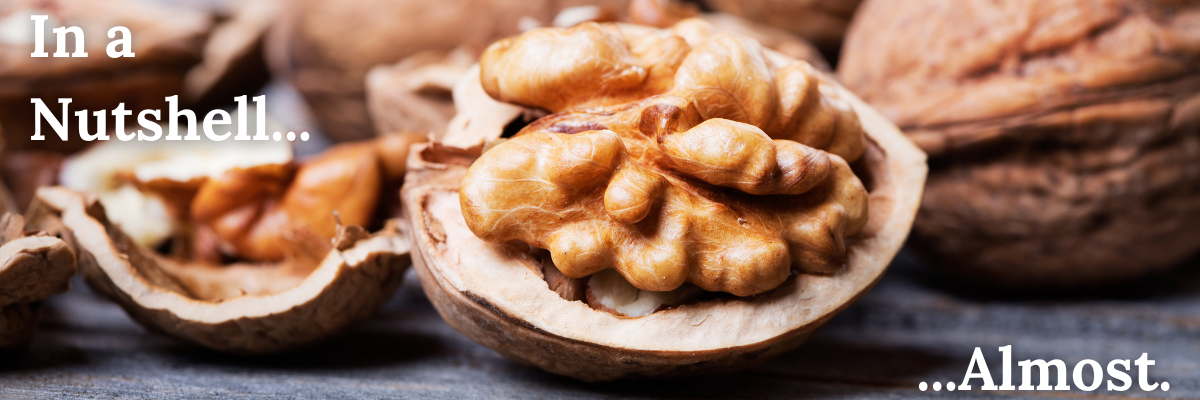Kitchen Utensils: 3 Things to Consider When Buying
I used to fall victim to strategically placed, teal-handled spatulas in the pudding aisle. This all too often leads to the heartbreak of a half-melted, teal-handled spatula head and the inevitable internal battle on whether to trash it. It is possible to prevent such tragedies when such encounters are paired with my kitchen utensils buying process. My utensil-loving heart can only take so much, so now when I meet another adorable kitchen tool, I have a plan! There are 3 things to consider when buying kitchen utensils. What is its purpose? Will it be useful? Do I have a place for it?
Can the Kitchen Utensil Take the Heat?
If it stirs, flips, scoops, ladles, or scrapes the flavor bits from the bottom of a pan, can it take the heat? This is the first test that helps me decide if I want to buy a kitchen utensil. I can move on if it is made of bamboo or wood (especially on the parts that may touch heat). If it is made of plastic or any flexible material, then I must research further. I instantly go for the tag to see if it says heat resistant up to x temperature. If it does not say this anywhere, I must assume it is not resistant enough for the manufacturer to boast; therefore, it is not resistant enough to matter. Silicon typically has high heat resistance up to 600 degrees F, but if it does not boast this, I must assume it is made of other materials. (Better safe than sorry.)
Heat resistance matters depending on my hopes and dreams for my hopeful kitchen resident. A pan over low heat tends to be about 200 degrees F, medium heat around 300 degrees F, and high heat starts about 400 degrees F and goes up from there. Grills are an entirely different beast with temperatures ranging from 450 to over 700 degrees depending on fuel and use. Do not underestimate the importance of understanding your own kitchen utensils’ limitations when it comes to heat and functionality.

I can give it bonus points in this category if the handle is also heat resistant and has a notch for resting on a pan like this set from Rachel Ray. If I am babysitting a thickening soup over the stove, it might be helpful or at least tempting to lay the stirrer down for a few seconds in the pan leaving its thin handle perched precariously above the hot flames of my gas stove. I will be much happier to return to stirring if the handle were not scalding hot metal. Enough said on that topic.
If it can’t take the heat, then does this mean I won’t get it? Not necessarily. It just means I need to be aware of its abilities. I highly suggest having a separate place for serving or chilled salad stirrers. If I like a piece enough, then I may still get it if I know I can use it. This brings me to my next point.
Kitchen Utensil Space to Usefulness Ratio?
Does it peel, grate, slice, juice, cut, spiralize, whisk, scrape, flip, stir, fold or do backflips? How specialized is it? This can be a two-edged sword. If it is only good for one specific task, then I need to be honest with myself. How often am I going to use it? Do I have something that can do the job just as easily or possibly even better? Can it realistically be used for other things outside of those pictured on the label or signage? One excellent example is my Mix-n-Chop. These are great for breaking up meat in the pan (if they can take the heat!), crushing stewed tomatoes, mashing berries for jam, avocados for guacamole, or rustic mashed potatoes! The time and effort it saves have been invaluable. In fact, I constantly find myself looking for mine when it is in the dishwasher, so I should probably get another one! YEARS AGO, when I got mine, The Pampered Chef had the patent on the design, but now there are many options (not all of which are created equally).

Another specialized, multi-functional item is the egg slicer. It can also be great for strawberries, peeled kiwis, mushrooms, and other small, soft foods. So, if I encounter a super cute one -but I rarely make boiled eggs—I need to consider the other possible uses when deciding the space to usefulness ratio.
It is also important to consider if cleaning the item will be worth the effort. I have an onion chopper that is great for chopping or slicing large quantities of vegetables, but it is a chore to clean it (since it has so many nooks and crannies!) You should consider if the utensil in question is going to be worth the effort. Is it dishwasher safe? Will it be easy to just wipe it off or rinse it immediately after use to keep the effort to a minimum? All of these things are great to consider when shopping and key to making good decisions when buying kitchen utensils.
Do I Have a Place for the Kitchen Utensil?
This question is both literal and figurative. Can I use it? An apple corer/slicer is wonderful to have if you eat apples often, but no one needs 5 orange peelers when no one in the house likes oranges. Not only do I have a place for it in my heart, but is there room in my home?

To tackle the figurative question, I need to think about my decision on the space to usefulness ratio. What am I thinking of using it for? What did I use the last time I wanted to do exactly that? Let’s consider the egg slicer and pretend I do not already have one. I have found a retro-lined, kitchen-theme-matching, egg slicer. I can already see myself slicing strawberries with it. I used a paring knife to slice them last time, so the idea of finishing an entire strawberry in one motion makes me eager to try it out. Come to think of it, I recall I lost a bunch of strawberries to mush a while back because the task of slicing them all up with said knife was too daunting for a weeknight. In this case, I definitely have a place for this gadget in my heart, so I am free to consider buying the kitchen utensil for my home.

If this kitchen contender is something I can see myself using, now I need to consider how high-profile it needs to be. If I will use it often, then it needs to be easy to reach. If it is something I may forget to use, then it needs to be easy to see. If it is especially stylish and fitting for my kitchen theme, I should consider making it a functional display piece. (Be careful not to become a cluttered, garage sale theme.) For more information on organizing your kitchen, please check out my article 5 Steps to an Organized Kitchen (coming soon)!

Kitchen Utensils In a Nutshell (Almost)
More times than not, I do not end up adopting a new kitchen discovery. After all, no one needs hundreds of spatulas or even fifteen wooden spoons. Not all pancake flippers are heat resistant up to 400 degrees (although I think this should be a prerequisite)! And, finally, sometimes a knife or spoon can do the job just as easily. I am careful to consider purpose, usefulness, and storage space before welcoming a new utensil into my home. If you are looking to buy kitchen utensils to complete a well-prepared kitchen, check out this list on Listonic.com!
That’s Another Blog (Post)
If some part of the process has you stumped on your utensil conundrum (because it is such a great find, but you have no use for it)—consider buying the kitchen utensil as a gift. You might even create a themed gift basket for pancake breakfast themed around a pancake spatula—but I think that might be a topic for jiffytalking another day!

